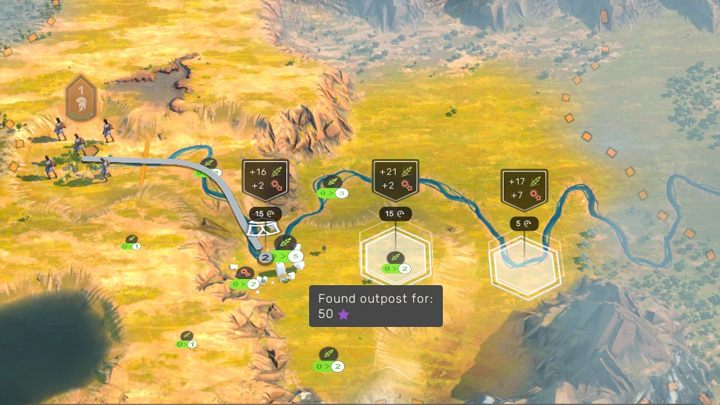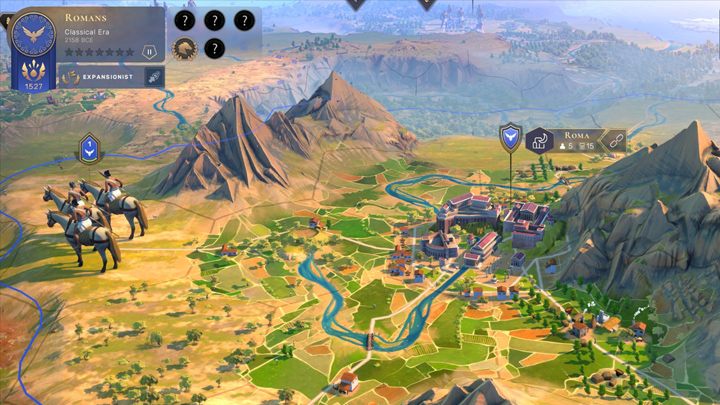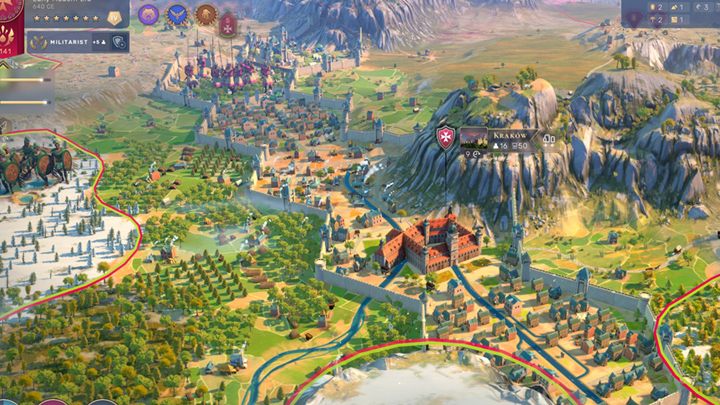Humankind: Cities - how to build them and where?
In this part of the Humankind game guide you will find information about cities, how to build and choose a location for your first city.
Last update:
This page of our guide to Humankind describes the basics on how to build the first city and other tips on how to build the next ones.
Cities are a necessary element of the gameplay, without which you will not achieve victory. Cities are created from outposts, so first you need to occupy regions with outposts. Any land unit can do that. The first city can be created at no extra cost, but the next ones require an increasing number of influence points. In cities, it will be possible to develop science, raise money, and develop infrastructure.
The game follows a simple rule: one region = one city. During the game, you can combine several cities into one, thereby creating real metropolises. Cities can be expanded by adding other territories.
The first city
The location for the first city is very important. Therefore, exploration is crucial in the first rounds of the game. Your tribes have to search the area not only for bonuses scattered around the map, but the best region for the construction of the first city. The best areas are full of food and industry points. A site that has 10 points for both indicators is the absolute minimum to build your first city. This area will usually be covered with forests and prairies. Avoid desert and winter regions, which are often poor in basic resources.

Very good field has as many as 15 points, but it is difficult to reach a field, which offers such a bonus for food and industry. Look for rivers and special fields such as caves or waterfalls. Such bonuses add a few more points to the development. Rivers generate income for both food and industry. In principle, the more the better, the rivers are very attractive places to build! Outposts and cities (administrative centres) can "mine", that is, exploit fields that generate food and production - in contrast to regular districts, which can collect only one type of resources.
Where to build cities?
The field for the first city is not only a high income of basic resources. If you see luxury or strategic resources (even those not yet discovered by your scientists), then it is worth changing the region and choosing an even worse field for building a city. See what bonuses are offered by luxury resources in the area - if you get additional points of food or stability, then it is worth moving to such an area. Of course, you can simply add the region to the city and put the extractors or mines, but in these first rounds it is safer to have such resources close to each other. The enemy or Independent People can simply destroy such an outpost, and you will lose time and invested points.

Do not build a city in isolation, that is, in a place where it will be difficult for you to expand, for example, in an isolated peninsula. Expansion is at the heart of the game, and if you can't add new regions or build new cities, you'll quickly fall behind other nations. The defensive aspect is equally important. Setting up an outpost in a defensive position, behind a river or on a hill, will greatly facilitate the defense of your army.

Pay attention to the borders of the regions. If there is not enough space around your outpost, then the merging of regions can open up new opportunities. Remember that emblematic districts (i.e. unique for a given culture) can only be built once in a given region. However, they can only be adjacent to each other when they are in separate regions. It's just a way to accumulate their bonuses and income.
- Humankind Guide
- Humankind: Game Guide
- Humankind: Basics
- Humankind: Beginner's Guide - first turns
- Humankind: Units - movement and combat
- Humankind: Outposts - what are they, where to build?
- Humankind: Outposts - claiming territory, available actions
- Humankind: Ancient Era - how to advance?
- Humankind: Units - how to increase your army?
- Humankind: Cities - how to build them and where?
- Humankind: Territory - how to connect with the city?
- Humankind: Basics
- Humankind: Game Guide
You are not permitted to copy any image, text or info from this page. This site is not associated with and/or endorsed by the developers and the publishers. All logos and images are copyrighted by their respective owners.
Copyright © 2000 - 2025 Webedia Polska SA for gamepressure.com, unofficial game guides, walkthroughs, secrets, game tips, maps & strategies for top games.
